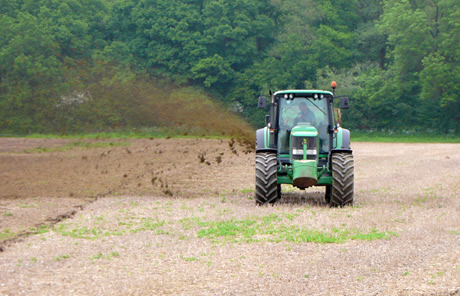
Many farmers in the UK are still struggling to manage their slurry, a survey carried out at the 2010 Dairy Event has revealed.
The survey, put together by slurry additive firm Epizym, asked farmers a series of questions on such topics as slurry storage systems, agitation processes and spreading methods.
One in two with a problem
Managing Director of Epizym Stuart Aitkenhead was surprised by how many farmers still struggle with problems which are easily and cheaply avoided. "Nearly one in four farmers surveyed have problems with smell and nearly one in three cite floor solids, crusting or storage capacity as issues. These are all problems which a good slurry additive can deal with within six weeks."
A smelly issue
A major concern for farmers is complaints from homes in neighbouring villages about the smell of slurry and associated fly problems. One solution is to spread only a few times a year and not at weekends or Bank holidays. However this practice can restrict spreading during good weather windows if they hit those days and can limit how often slurry is spread.
When it comes to application methods, injecting slurry or using a trailing shoe are preferable over splash plate for reducing smell. Giles Dadd, agricultural consultant for Epizym, explains. "Splash plate application throws slurry into the air in an upward trajectory. The liquid comes out as mist, with a finer droplet size, and these travel carrying the odour further. Injecting the slurry ensures it gets right into the ground and certainly creates less odour but can be expensive. However, this expense may be offset by the potential increase in nutrients gained from getting the slurry right to the roots of the plants. Using the trailing shoe or band spreading can give higher work rates and less expense by leaving a line of slurry on the soil surface."
Malcolm Strong, who farms in Cumbria, found using a slurry additive solved his problem. "With a retail unit selling wedding dresses on the farm, prevention of odour and reduction in fly population is vitally important. Since using Epizym’s slurry additive the smell is no longer an issue. One time I didn’t use the additive and the smell came straight back."
Crust and floor solids
The survey also found 14% of farmers have issues with crusting and floor solids, namely the cost and aggravation of stirring adequately and the amount of time taken. Easy access to the store can be a problem for mixing and of course mixing pushes out odour and ammonia into the atmosphere, creating an issue with bad odour.
In addition, whilst agitation is effective if planning to spread straight away, if left, the slurry store will reform into its constituent parts within a number of days. Putting a lid onto the store stops a very hard crust forming as it helps avoid the drying properties of the wind and sun, but again, the slurry still goes into its constituent parts, albeit a softer crust more likely.
Using a slurry additive can be cheaper and easier than mechanical agitation, as Cheshire based dairy farmer John Pidsley found out 13 years ago. "Treatment was easy. I just mixed Epizym with warm water and poured it into the reception pit before it was pumped into the tank, ensuring the bacteria were introduced into the liquid fraction of the slurry and not wasted on the surface.
"The treated slurry is so much easier to handle. There is very little crust and the slurry has a more even consistency, even before mixing. This has greatly reduced the time and energy spent stirring the stores before spreading (it only takes me an hour to an hour and a half now), reducing hassle and allowing us to take advantage of appropriate weather windows for spreading."
Storing up a problem
With NVZs high on farmers’ agendas, the second major slurry problem farmers faced is concern about slurry storage capacity, with most farmers in NVZ regions still needing additional capacity.
A new store is the obvious solution, but before even thinking about extra storage facilities, farmers should ensure their existing store is used efficiently. Having a lid on the tank to prevent rainwater taking up valuable space is one option. Agitating the tank very regularly is another. As mentioned earlier, use of a slurry additive to ensure slurry organic matter remains in suspension rather than naturally settling as solids at the bottom of a tank or as part of a crust is a cheap and easy way to ensure valuable space isn’t wasted on floor solids and crust which never get tackled. For some with very thick crusts and floor solids this can make a big difference in terms of capacity. It’s also key for lagoon storage, as keeping slurry liquid reduces or removes altogether the time taken to mix.
Conclusion
While it’s clear from Epizym’s research that slurry management is still a major concern for some farmers, there are time and cost-effective steps which can be taken to help farmers benefit from their slurry rather than see it as a headache.
